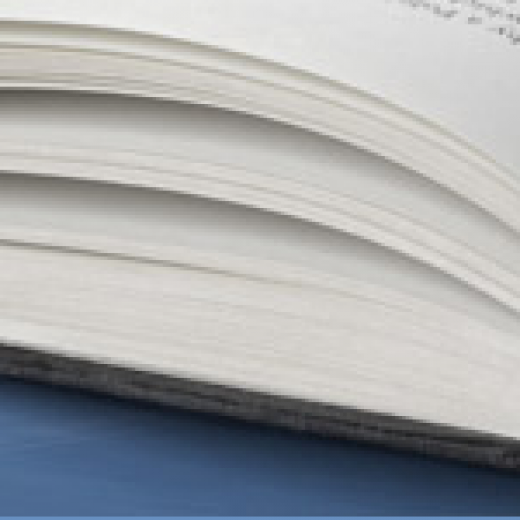Artist Entrepreneur: “A” The Artist’s Alphabet Guide to Writing About Your Art
Welcome to Artist Entrepreneur Fridays, where we talk about the fun, wild and scary ride of succeeding as an artist entrepreneur of all stripes and types and mediums.
Welcome back guest columnist, Aletta de Wal. She specializes in helping fine artists succeed in their careers. She’s posting regularly on “The Artist’s Alphabet Guide to Writing About Your Art” and other success tips for fine artists around writing. Enjoy! And let us know if you have a particular topic you’d like Aletta to address. Thanks!
PS. As a writer I’m inspired by visual and love seeing the similarities between writing as a business and visual art as a business.
^*^
With homage to Big Bird on Sesame Street, the letter “A” brings this post to you, for Art, Artist Statement, and Audience.
Think of marketing your art as the ultimate and actual reality show – your art is the start and you are the spokesperson.
You Are a Spokesperson For Your Art
Artists who do not like to talk or write about their art insist that their work speaks for itself. If that were true, there would be no art critics, show catalogues or labels on museum walls.
It’s true that artists develop their own “visual language.” Viewers may well make their own interpretations of your work, but it’s up to you to give your art a context for understanding your intentions.
“Signature style” is the sum total of how you express your creative individuality. When you write about it, consider the following aspects:
- Composition: the arrangements, balance, rhythm and connections, and variety of how you present your art.
- Design elements: colors, values, contrast, textures, forms, lines, shape, scale, proportions, focal points, perspective, and use of space.
- Media: the materials you use to create your art.
- Motifs: repeated symbols in your personal visual language.
- Subject Matter: the literal, visible image you create.
- Theme: ideas you convey by the visual experience through symbols, and suggestive aspects of the image you create.
- Tools & Substrates: the tools you use that create distinctive marks and the surfaces on which you create your art.
Your Artist’s Statement Introduces Your Inspirations, Influences & Methods
You are a communicator through and for your art. You need to be able to talk about your work and your accomplishments from your perspective.
Remember that this statement may be your stand-in, so make it accessible and interesting for anyone to read. Make it an honest, straightforward expression of your ideas and your thinking process when it comes to creating your art. Keep in mind that you want your audience to believe that you know what you’re doing, and that you believe in your own work.
An artist’s statement should be no longer than one-third of a page and no smaller than 12-point type in a standard typeface. The brevity and size of type help keep your expression of ideas concise and well focused.
You can start to compose your statement by writing much more than you need, knowing that you’ll be deleting and refining most of what you’ve generated. Be specific in what you say, rather than so general that the statement could apply to someone else’s work. After finishing your statement, give it to others to read for honest feedback.
A well-written statement will also assist curators, publicists, and arts writers in preparing printed information and articles about you. It makes a useful handout at exhibits and studio visits, and as the text in the body of a letter, or in a press release.
You Always Write For Your Audience
This seems obvious but few artists I work with can really define the people who have bought or will buy their art. That makes marketing a hit and miss proposition. Everything you do in business starts with understanding your audience.
Once you clarify to whom your work appeals and where and how they like to see and buy art, your marketing becomes much easier. What kind of person likes your work? Where do they like to see your work? How do they decide when, where and how often to see art? How much money do they spend on art and how often do they buy? What else is competing with their art interest and money for purchases? Are they computer-literate and web-friendly? How and when will they display your art? What kinds of art are most appealing to them? Who and what media do they turn to for information?
Want to have some fun with these? Draw a picture of the people in your audience, and write your artists statement to them while you sit in your studio surrounded by your art.
Next time, the letter “B” for bio and Blog.
PART 2:
Getting To Know Your Audience
Start by writing down what you know about the individuals on your mailing list. As you build the specific profile of your audience, add information that will help you connect with what matters to them. The more you know, the more effectively and efficiently you can market.
There are three categories of information to collect:
- Demographics
- Psychographics
- Technographics
Demographics are the facts, e.g.:
- Male or Female
- Married, Separated, Divorced, Single
- Family Status (Children, Other Dependents)
- Age Range
- Residence Location (Home Owner or Renter)
- Urban or Rural
- Car Type
- Education level
- Occupation
- Work Location
- Ethnic background
- Art Preferences (Subject matter, medium, size, price)
- Art Budget (Annual)
Psychographics are the personal characteristics you experience or learn, e.g.:
- Personality
- Attitudes
- Values
- Interests/hobbies
- Lifestyles
- Why they buy art (investment, pleasure, memory)
- What other artists they like
- Why they like your work
- What price range they find comfortable
- What are the benefits of buying your art (match couch, raise status, wanna-be artist)
Technographics are the ownership, use patterns and attitudes toward information, communication and entertainment technologies, e.g.:
- Computer Capabilities
- Mobile Phones & Devices
- Internet Use
- Photo and video sites
- On-Line social networks
If you understand how art fits into the context of their lives, you can discover ways to meet the people who will buy your work and who will champion you to their circles of influence.
[Enjoy this cool graphic from Aletta–>]
^*^
Aletta de Wal inspires fine artists to make a better living making art in any economy.
Aletta works with part-time, emerging and full-time artists who are serious about a career in fine arts. Aletta makes make art marketing easier and the business of art simpler.
More information at: http://www.artistcareertraining.com/artmatters-newsletter/











Great post Aletta,
You have answered some of the questions I’ve had of late. Since the economy has changed it seemed that the way I market my work needed to change also. I just did not know how to make the changes.
I especially appreciate your comment about individual, signature style. Thanks for the list.
The list to identify an getting to know our audience is helpful also.
Thank you,
Ellene
Hi Aletta
Thank you for this post. I am trying to figure out how to market stories I write and old stories I wrote years ago for my kids. Trying but not succeeding. Sigh. Your alphabet reminds me a lot of a form I use for my own artistic block breaker using letters to become critters, faces and other things. Doodling is essential and important in my art and writing. I have the signature style down but the audience is the issue. How to identify and how to break through to its’ collective awareness.
Obviously, I have work to do and you have inspired me!
Many thanks,
Shelley
Ellene,
Good to see you here. Yes, signature work is the key to a good art business. I’ve written a whole section on it in my book.
Shelley,
Nice to find another person who uses the alphabet to brainstorm! Glad I inspired you. keep talking to your audience and you will start to see some patterns emerge.